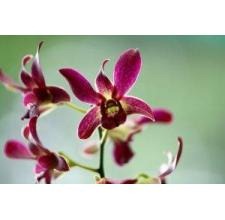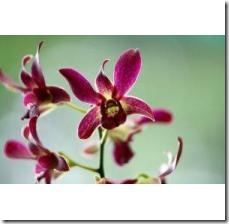Orchids can be one of the more challenging plants to grow, because they have very specific light and moisture requirements and are extremely sensitive to changes in the environment. But if you’re willing to put in the proper care, you will be rewarded with unusual foliage and delicate, ornate flowers, many of which are sweetly scented. In general, it is much easier to grow orchids indoors rather than outside.
- Difficulty:
- Moderately Challenging
Instructions
things you’ll need:
- Orchid
- Pot or other container with good drainage
- Growing medium
- Fertilizer
- Humidity tent (optional)
- Decide which type of orchid you would like to grow. Worldwide, there are more than 20,000 orchid species, and many of them are cultivated for indoor growth. Some good choices for beginners include Cattleya, Phalaenopsis, and Paphiopedilum.
- Set up your orchid growing station. In the wild, most orchids grow in moist forests, so they prefer high humidity and filtered or indirect light. The exact requirements will vary by species. If the air in your house is on the dry side, you may want to construct a humidity tent for your orchid. You can purchase these at garden centers, or for smaller orchids you can simply keep the pot inside an aquarium with a perforated lid for air circulation. Most orchids like humidity levels between 40 and 70 percent.
- Purchase your orchid. Look for plants with sturdy stems and robust, bright green leaves. Many orchids are sold when they are flowering, which provides with new owner with instant satisfaction. However, you should be aware that the transition between the greenhouse and your home will cause stress to any plant, and your orchid may drop its flowers soon after transplanting.
- Purchase orchid growing medium. Many orchids are epiphytic, which means that they grow in the air, usually clinging to trees, rather than in the soil. The growing media used for planting epiphytic orchids indoors include peat moss, dried fern roots, fir bark, sphagnum moss, stones or cork nuggets. Terrestrial orchids grow in soil. Ask the personnel at your local greenhouse or nursery which growing medium is best of your orchid.
- Water your orchid regularly. While orchids appreciate a humid environment, most don’t like having "wet feet" and require good drainage. A light watering once a week is usually sufficient.
- Fertilize your orchid. Use a fertilizer specifically formulated for orchids or tropical plants and apply according to the directions. Orchids generally will need little to no fertilizer in the winter and will need a bit more in the spring and summer.
- Repot your orchid only when necessary. Orchids don’t like being disturbed, and many species thrive in smaller pots which provide better support to their delicate root system. Depending on the species, an orchid may need to be repotted once a year, or it may be happy in the same pot for five years or more.


Deprecated: strpos(): Passing null to parameter #1 ($haystack) of type string is deprecated in /home/agriviek8Qv/agriviet.net/public_html/wp-includes/comment-template.php on line 2522